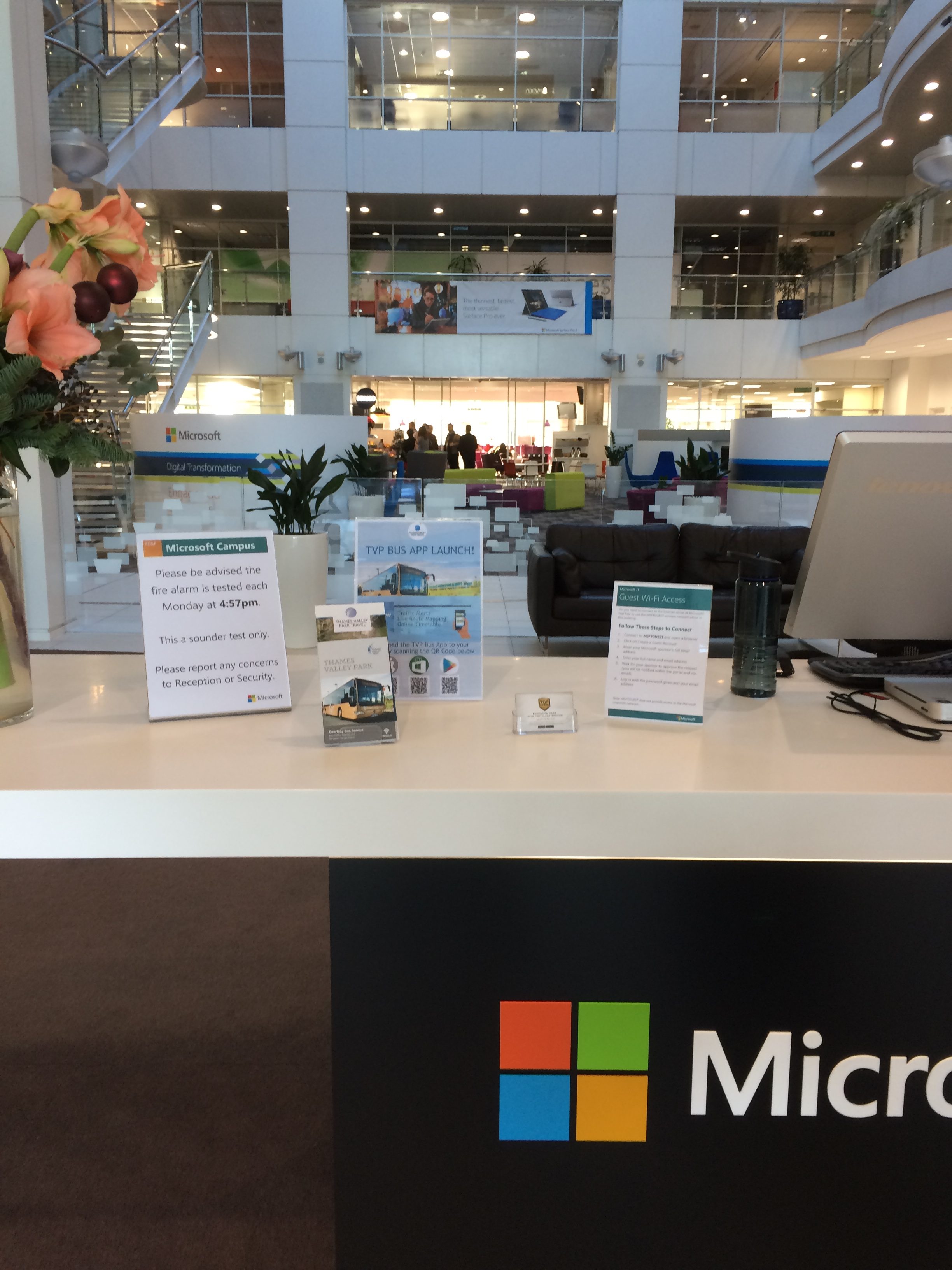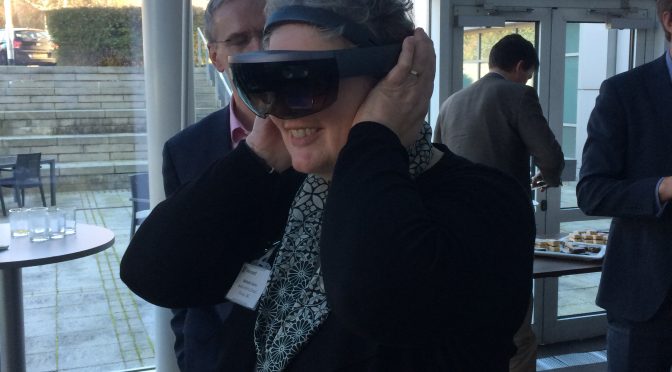This year’s Independent Schools Council Digital Strategy Group conference was held at Microsoft’s UK Campus. The Conference theme was Digital By Design, Digital By Default.
I had the opportunity to attend on behalf of the school, to listen to a variety of presentations both in person and via Skype from abroad. We also saw some live demos of collaboration with Microsoft’s tools, naturally, as we were on their turf.

There were many speakers during the day, but in summary from my notes:
Mark Steed spoke on teaching in the Middle East. 95% of Dubai schools are for-profit, which has introduced commercial drivers to education. Schools are concerned with ROI, economies of scale, and keeping staff costs down, which in turn impact school size, facilities, teacher qualifications and the amount of contact time.
This approach has meant schools have invested in blended learning to enable limited contact time, and also make use of video conferencing.
He predicts that for-profit will become the global norm to fill the gap in demand and supply for education. It will become a luxury to be taught by a specialist, superstar teachers will be demanding high salaries in the secondary sector while primary teachers shall be supported by robots as it will always require human interaction. Finally, he predicts VR will disrupt secondary education.
Vaughan Connolly spoke about how the future of professions, employment and schools are changing. He drew comparison to Moore’s Law, and reflected that we tend to over-estimate short-term impact, and under-estimate long-term impact.
Throughout the day several speakers referred to the development of artificial intelligence, Connolly referencing a Wilcocks and Lacity study which found that technology liberates people in the short term, to allow humans to do what humans do best.
Miles Berry shared examples of projects and the impact of problem based learning. As my focus is on computing, Berry’s talk felt very relevant, though at BGS we are already implementing creative and computational thinking in the computing curriculum. It was also useful to look at KS4 and KS5 computing, and the perspective of universities for potential computer science undergraduates.

Ian Phillips followed with further practical examples of computational thinking in action with the BBC Microbit. He had challenged his students to find a problem in life they couldn’t solve and then to work together to present a solution at open day, encouraging playfulness, curiosity and deep learning. One of the students gave a confident presentation about their experience and how the opportunities had led to great success.
Andrew Storey spoke of his school’s misfortune of a sinking building being turned into a great opportunity to design a new learning space. Modern learning spaces are flexible, placing students at the centre of the lesson. Storey explained how they went as far as training their students for 6 hours on how to be efficient in the classroom with technology.
Following this we had the opportunity to hear from overseas educators via Skype. James Mannion discussed sharing successful process with neighbouring school districts, turning teachers into problem solvers rather than dictating a solution. Bill Brennan discussed support networks between schools, encouraging adults to break out of their comfort zones with a smile.
Cat Scutt asked us to consider how we delivered teacher CPD, and whether we applied our use of technology for teaching students to how schools developed their staff.

We also heard about the Bloodhound Project, and had a chance to try out Microsoft’s HoloLens, which displays a blended VR overlaid on the real world, to the point it appeared a person was stood amongst us in the room which we could walk around and through while we explored human biology.







